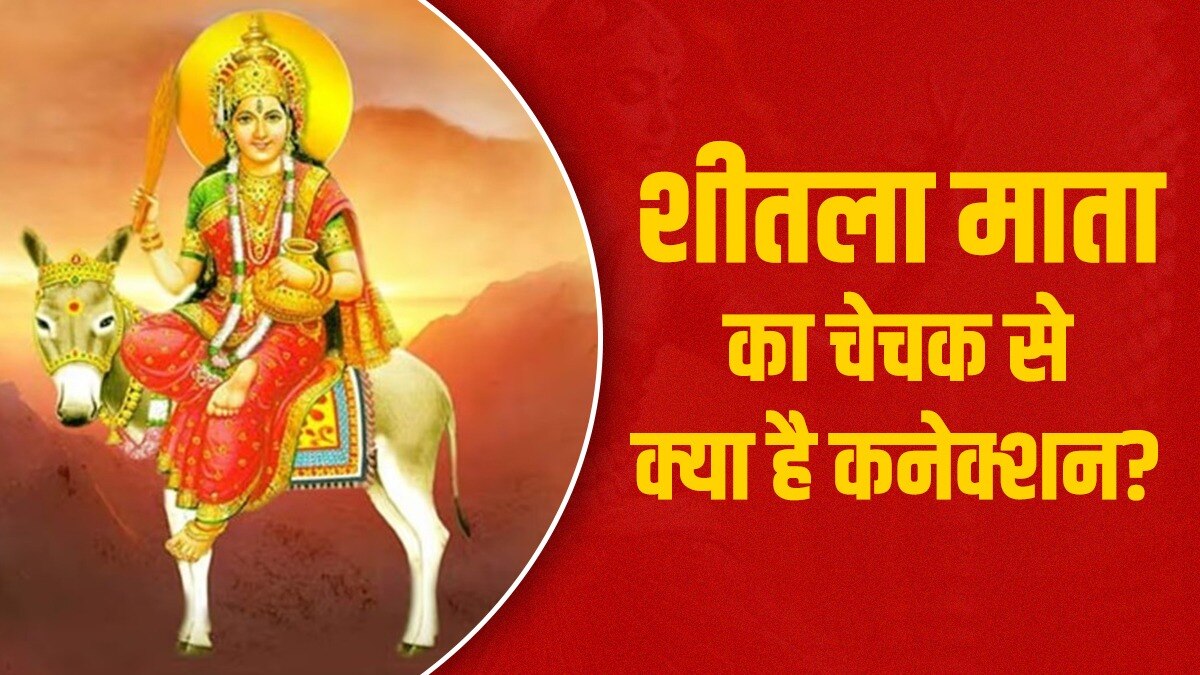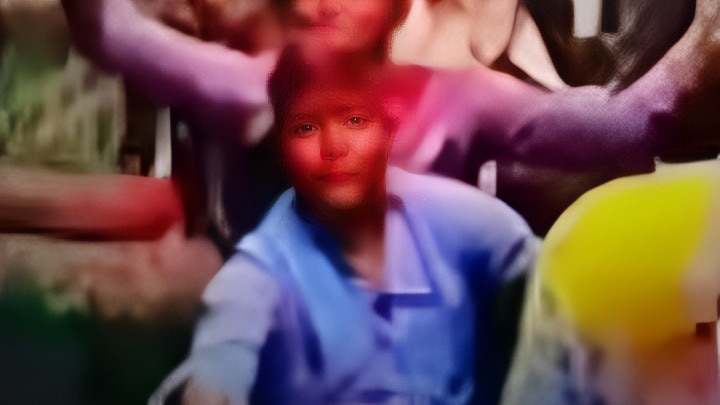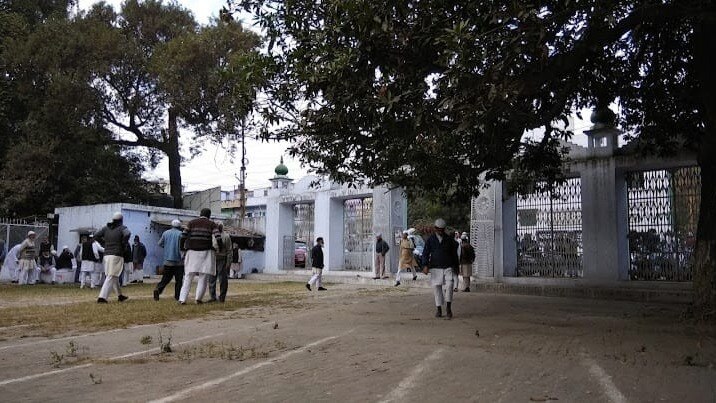Use of bio weapons, outbreak of smallpox and a monster of fever… What is their connection to Sheetla Mata? – shitla ashtami use of bio weapons smallpox and God of Fever Connection with Shitala Mata NTCPVP
Science has made a lot of progress and time has also become modern, yet there are some secrets and beliefs of ancient times, which are not fully believed and they cannot be completely denied. The fine line between superstition and unresolved mysteries, our life today is somewhere entangled in the middle of them. In the midst of this confusion, we also celebrate the festival, fast and festival with faith and try to know about them by questioning them.
Shitala Ashtami is a subject of such curiosity. Which is known as Basoda Pujan or Basoda Vrat. Eastern Uttar Pradesh or say that this is a day in the whole of North India, when dishes are made at night. The next day is a fast till noon and then after this, Prasad is eaten by offering this stale food under a tree, near the temple or on the banks of the pond.
Tradition of stale food on Sheetla Ashtami
Usually, warm and fresh food is always instructed, but this is the day of the year when stale food is a tradition and all eat it in Prasad form. After Holi, the eighth day is known as Sheetla Ashtami. Sheetla Mata, which is a form of Goddess Durga or Parvati and apart from this, the goddess is also known as Roganashini.
The question arises that how is the mention of the Goddess originated, where is the mention of her story and why did she have the tradition of offering stale food? The answer to all these questions is recorded in Skanda Purana, but before knowing about Sheetla Mata, it will be necessary to know about a disease, which had created a lot of terror in India till 60-70 years ago. Its name is smallpox, known as chicken pox. There are some similar diseases similar to this, which were known as small pox and measles.

Chickenpox was considered an outbreak of the goddess
In rural India, all these diseases have been known as big mother, younger mother and measles. In these, big mother’s disease used to be very dangerous. Who killed many people and if they survived, they became victims of some physical disability. Its ill effects include the eyes of the people, especially on the body to have terrible stains on the face. If you see an elderly person today, somewhere, there will be a stain of smallpox on their body and on asking, he will also mention the terrible state of smallpox.
After the invention of smallpox vaccines, there was a massive vaccination in the country. Vaccines were put on a war footing by setting up camps in schools. On the arm of the old people can be seen as a large size spots as much as a coin or seal, this spot remains due to the smallpox vaccine.
Rural India called and believed smallpox as a great mother, so this disease was considered as ‘outbreak of Goddess’. In the 90s, when there was a disease of smallpox, this vocabulary was common among the people that ‘Mata Nickel came’. Similarly, small pox was called Chhoti Mata. Being connected to the goddess and mother, it was considered a divine outbreak and then in the village where the cases of smallpox used to come, the entire village used to be involved in the worship of Shitala Mata in the form of Devi.
Worship method of Sheetla Mata
For the worship of Sheetla Mata, food was prepared a night before, then the fast would be kept till noon the next day. Cleaning with a broom made of neem leaves nearby, water was sprayed with a pot and then at the time of climbing the head of the sun, the goddess was offered a torrent to the goddess with turmeric mixed water. Then the goddess was wished to keep the neighborhood, environment, environment and body cool.
All these beliefs for smallpox were because no treatment or medicine was developed and a mythological story was associated with it, which is described in Skanda Purana. This Purana Katha became famous among the people by becoming folklore and legend with some excesses.
The word ‘Sheetla’ means ‘cooling’. Goddess is considered to be relieved of smallpox (explosive disease), fever, and other skin related diseases. Their vehicle is a garde (donkey), and they wear broom, soup, urn, and neem leaves in their hands. These symbols are signs of hygiene, disease prevention, and coolness.

Goddess is mentioned in Skanda Purana
In Skanda Purana, Shitala Mata is mentioned in some parts like “Kashi Khand” and “Nagar Khand”. His story comes out as one of the various forms of Goddess Durga and one of her many names. His origin and importance in Skanda Purana can also be understood through hymns like “Shitalashtak”, which is considered composed by Lord Shiva. The mention of Shitala Mata in Skanda Purana, Kashi Khand, Chapter 23 and Nagar section indirectly comes in the context of the incarnations of Durga. Here he is mentioned as “Rogirani” (defeating diseases).
Many stories of the origin of Goddess
The story of how Shitala Mata originated on the basis of Skanda Purana and folk traditions is said, such as Goddess Durga took an avatar in Shakumbhari form and created fruits and vegetables, in the same way when the outbreak of diseases and epidemics increased on earth, especially chickens (cold diseases) put the mankind, then the mankind was disturbed by the mankind, the mankind was protected by the mankind. Manifested in form. This form was a symbol of coolness and disease prevention. This avatar of Sheetla Mata was special because it not only destroyed diseases, but also provided coolness and peace to the victims.
Similarly, there is such a story that when the outbreak of smallpox spread on the earth, Lord Shiva asked Parvati to overcome this crisis. Parvati gave birth to a power from her glory, which was able to calm the diseases. This power took the form of Sheetla Mata. Shiva, describing his glory, composed “Sheetlashtak”, which became a means of disease for the devotees.

Story of demon who spread fever
In this connection of the stories, a demon has been conceived in Skanda Purana, who became famous as Damrasura. The demon was a demon of fever and it started spreading diseases like fever and smallpox on earth. His terror increased so much that both mankind and deity were in trouble. Then Goddess Durga incarnated as Sheetla and killed the Damrasura. In this war, Sheetla Mata cleaned the diseases with her broom, provided medicine with neem leaves, and sprinkled cold water from the urn and purified the earth. After this incident, he started worshiping in the names of ‘Roganashini’ and ‘Sheetladevi’.
Shitala Mata Swaroop
In the Skanda Purana, the first verse of his Sheetlashtak describes his form:
Vandehan Sheetalan Devi Rasabhasthan Digambaram.
Margnaikalashopetan Shurpalankritamastakam॥
Here his vehicle (Gaur), Digambar Roop (symbol of divine power), and a broom in the hand is associated with his origin and work.
Bio vapers used in Mahabharata
A deity similar to the same name is worshiped in the zonal parts of South India, which is mentioned in Skandpuran. In Hindi, it can be considered as feverish, but they have different names in different local languages. In the peace festival of Mahabharata, initial mention of fever is found, in which he is told as a demon with three legs and three -heads. Its name was fever which was born from Shiva’s sweat. According to the Harivansh Purana, when Krishna fought with Banasura to save his grandson (grandson) Anirudh, Mahadev Shiva had to fight on behalf of Banasura. Shiva made Maheshwar fever to protect Banasura and threw it on Krishna’s army.
In response, Krishna produced Vaishnav fever. In this way, there was a war between the two threads, in which Krishna fever was victorious. Maheshwar fever weakened and Vishnav fever was pacified by Vishnu. The conflict of these two types of human race had a bad effect and it is believed from here, the process of fever and smallpox started between people. To calm this, Goddess Sheetla came in manifest form and then her worship started.
It can also be seen in a way as a biological war, when bio -weapons were used in war.
There are temples of Damardev in South India
Damardev is also mentioned in medical texts like Charak Samhita. The description of Maheshwar fever mentioned in Harivansh matches the details given in Vishnu Purana, Brahma Purana and Skanda Puranas. In the Vishnu Dharmati Purana, the sculpture of fever, painting and depiction of dance is explained in detail. However, whatever sculptures and statues are available, there is a lot of difference in contrast to the details recorded.
For example, there is a statue in the 13th -century Tiru Ruvar Durudur’s Damrehareshwar Temple. This statue is four hands. He has fire and ax in his rear hands. The front left hand is in a gazelle posture and the right hand is in Abhaya Mudra. According to a report of The Hindu, a special temple of the god of fever is also in Kanchi. It is also called the Damrehareshwar Temple, in which there is also a pond named Damartirtham.

Many heads in the Damhareshwar statue here are like a pyramid on top of one. The 13th-14th century Nepali-origin statue kept in the Chicago Museum is wearing a Tiger’s tiger in a statue of Nepali origin, in which the tiger of the tiger is seen. They are holding snakes as jewelery. The front left leg of Damrehareshwar in the Kodwasal temple is raised in dance posture. In the Tirutturapundi taluk, a statue of Damrehareshwar is wearing Trishul, mace and Ankush (an elephant’s curb).
In Taramangalam, Salem district, there is a statue of three ends, three hands and three legs of Damrehashwar. Their raised left leg is placed on a lotus flower. The statue of Damrehareshwar in Bhavani has three heads, three hands, three legs and nine eyes, but it has no vehicle.
Statues of Damardev in Eastern India
Similarly, in Eastern India, Damardev was worshiped with Sheetla (Goddess of smallpox) and ghantu (god of skin disease), which continues in Hooghly, Howrah, Medinipur, 24 Parganas and Kolkata. Sometimes the devotees offer small statues of Damardev, which are called Chalan. There is no independent temple for fever in West Bengal. In Bengal, Damardev is pleased with the goats of fruits, rice, sweets and sacrifices.
Fever dev in Buddhist opinion
Damardevi or deity is also mentioned in Buddhist opinion. In a Buddhist illustration, the Buddhist goddess Pararnashbari of fever is shown with Sheetla on the right and Hayagriva on the left. Here Hayagriva is considered to be a fever. In West Bengal, three colors, black and gray are seen in the idols of contemporary raw clay fever. In an idol, he is shown wearing warrior shoes. The sculptures of Damardev reflect both continuity and change.
Why is the tradition of stale food?
Now the question arises that why is there a tradition of stale prasad and food? It is argued that this time of Chaitra month after Holi is the time to change the weather. Due to the change of seasons, there are changes in nature, there are many changes in the body. Along with this, there is a need to develop immunity in the body afresh, which is weakened in this season.
Digestive system is also getting weaker and due to the second spring season, sweat is sometimes coming out. In the winter season, toxin accumulates in the body and at this time the body needs internal treatment. Stale food becomes a means of promoting this internal purification and immunity. During this time such food is consumed which has gone through the process of fermentation or firmmentation. Firmed foods contain good bacteria that make the intestines strong. Guts are good for health and also increase the immunity of the body.
That is why Basoda worship has been going on in the Sanatani tradition since ancient times, which is the boon of health for us.
(Tagstotranslate) Sheetla Ashtami (T) Shitlaashtami (T) Shitla Mata (T) Sheetla Devi (T) Jwar Devta (T) Bukhar Ka Devta (T) Basauda Puja (T) Basauda Puja (T) Basauda Puja Puja Puja Puja Puja Puja Puja Puja Puja (T) Basauda Puja (T) Basauda Puja (T)






